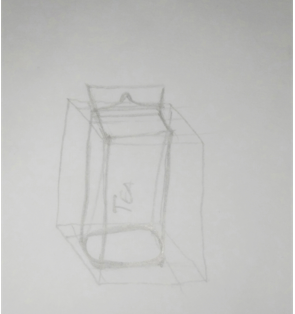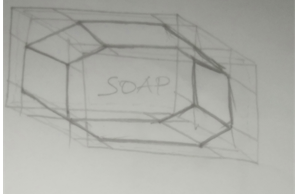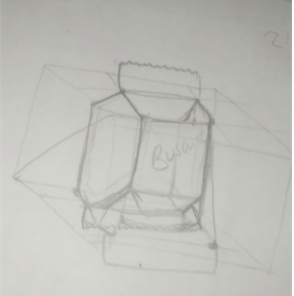Introduction
Packaging encompasses the use of science, technology, and art in enclosing products for storage, use, distribution, and sale. It has been targeted as a medium for waste generation for a long time, thus a focal point for environmental concerns and measures. The actions are established around the traditional waste management pyramid. These measures and concerns have shifted the focus to more holistic ethics and alignments with models of ecological packaging developments to help preserve and positively impact the physical environment. This report seeks to discuss the sustainable packaging developments of tea, soap, and biscuits, presenting the analysis of the existing product and a pitch of eco-friendly new sustainable packaging ideas.
Methodology
This report is developed using information obtained from various secondary scholarly sources, all listed on the reference page. The report entails a broad overview of the available research literature with an analysis of the existing and the required product packaging designs.
Scope of the report
The report focuses on several critical aspects of the packaging techniques and designs in the Australian product market, giving recommendations on the proper packaging designs that are sustainable and eco-friendly.
Discussion
Tea Bushells Package
The Australian bushells tea tin is designed in a thick rectangular shape in an idealized Srilankan tea picking sight with the image of a woman picking tea in a hilly terrain. The bushells cans, which cost around $0.50 to produce, are made from steel using molten iron (Deshwal and Panjagari, 2020). The iron ore is mixed with limestone and coke in the blast furnace and then melted at a high temperature by burning fossil fuels such as natural gas. The production process of steel creates massive emissions of greenhouses gases which creates global warming (Shen et al., 2020). Consequently, the sulfur oxide produced mixes with water vapor in the atmosphere to form acid rain, creating water pollution.
The containers protect the tea leaves from external damage during storage, handling, and shipment, but they are highly corrosive when exposed to water; they corrode to form rust which is harmful to plants and soil, as it destroys soil nutrients, thereby causing stunted growth and even death of the plants (Deshwal and Panjagari, 2020). The waste containers are disposed off at a location for collection by the contractor company for recycling. The recycling process uses a considerable amount of energy to shred and molt the scrap metals, thereby contributing to greenhouse gas emissions.
It should employ a new design of filmed paper packaging in the form of a rectangular pouche that cost approximately $0.3 to produce. The materials are manufactured in three layers of films; the first layer has the edible coatings formed directly on the tea substance, which helps preserve flavor, aroma, and color (Khalil et al., 2016). The second layer is made thick to prevent the light and ultraviolet rays from damaging the product. The outer layer is designed for perfect advertising and decoration to attract customers (Khamis, 2016). The production process for paper uses less finite resources and is sustainable with minimal impact on the environment (Khalil et al., 2016).
Paper is made from paper pulp and is easily recycled. Its production process has minimal pollution effects due to less emission of toxic air and water effluents. It decomposes much faster than steel, and it is easy to transport because it is lighter. Also, paper is not subject to effects brought by changes in temperature; therefore ideal for the product’s shelf life.

Bar Soap Dove Package
The dove soap uses a rectangular white printed plastic with an outer wrapper with an image of a golden dove flying towards the white bar soap. The packaging is made of oils and natural gas transformed into PET plastic, derived from fossil fuels, as the outer wrappings for the bars (Chirani et al., 2021). In keeping with Shen et al. (2020) production process is responsible for the emission of a significant amount of greenhouse gas together with other air emissions of perfluorocarbons, hydrofluorocarbons, sulfur hexafluoride, and nitrous oxides, which cause air pollution and creating substantial harm to the ozone layer.
After use, the plastic wrappers are buried in the landfill or sometimes become litter blown away by the wind into the environment. This packaging does not degrade quickly, and the chemicals of ink and dye from the packaging labels leach into soil and groundwater, causing soil and water pollution. At this point, they release toxic elements like antimony which, when exposed to humans, causes gastrointestinal irritation (Chu et al., 2021). Though these plastic bags are cheap to produce at approximately $0.18 per bag, they do not encourage environmental sustainability and need new designs.
Therefore the company should employ a purely paper packaging design made of paper cardboards in an octagon shape, designed in white color with tactile packaging attributes, including considerable weight with a smooth, refined texture, which roughly costs $0.2 (Spence, 2019). Paper is biodegradable, and its production process is eco-friendly compared to plastics; therefore, this will help reduce the effect of environmental pollution (Khalil et al., 2016). On the other hand, the tactile packaging method will aid in significant customer attraction, thus bringing substantial benefit to the company (Khamis, 2016). The cardboards and the octagon shape are valuable for maintaining the shape of the soaps when they fall or when under external pressure. The new sketch design is also used to create perfect space for advertising and it is attractive.

Biscuits Uncle Toby’s Package
Uncle Toby’s muesli package is designed in an unrecyclable thick plastic sachet which costs $0.15. The packaging uses a white printed sachet with the image of the snack. It is made of metalized polypropylene with a micro layer of aluminum (Niazmand, Yeganehzad and Niazmand, 2021). Polypropylene is derived from fossil fuels, and its production process is responsible for vast amounts of greenhouse gas emissions that pollute the air.
The non-reusable package is suitable for protecting the biscuit from external damage by elements like water and pests. It also protects the biscuits during storage, handling, and transportation. The waste packages are not recyclable or compostable and therefore are incinerated as a waste management method. According to Shen et al. (2020) in incineration, plastics release toxic elements like phthalates and bisphenol A (BPA), which causes harm to the air and is therefore hazardous to the ecosystem.
The company should incorporate recyclable packaging technique designs to ensure sustainability. It should employ non-laminated biaxial oriented polypropylene made of organoclay and nanocomposits films with positive oxygen permeability (Shayanipour and Bagheri, 2019). The new design is made in the form of a rectangular pillow-shaped pouch with a mixture of yellow and chocolate colors. It is used to extend food’s shelf life through its intrinsic barrier properties against gases, and prevent environmental pollution (Shayanipour and Bagheri, 2019). Although this packaging is expensive at approximately $0.16 per package, it is more healthy and convenient for the health of animals and plants. The packs are made tight to prevent the biscuits from breaking and ease the product transportation.

Conclusion
The sustainability theory connected to the product packaging design is a complex and abstract concept open to various interpretations. To advance sustainable developments in the packaging of products like tea, soap, and biscuits, the stakeholders require proper guidance on implementing these developments into their daily business practices. The traditional pyramid loses its validity within the packaging context, and more holistic approaches with adequate regulation by the national environmental management authority are necessary to solve future ecological challenges.
Reference List
Chirani, M.R., Kowsari, E., Teymourian, T. and Ramakrishna, S. (2021) ‘Environmental impact of increased soap consumption during COVID-19 pandemic: Biodegradable soap production and sustainable packaging’, Science of The Total Environment, p.149013.
Chu, J., Cai, Y., Li, C., Wang, X., Liu, Q. and He, M. (2021) ‘Dynamic flows of polyethylene terephthalate (PET) plastic in China’, Waste Management, 124, pp.273-282.
Deshwal, G.K. and Panjagari, N.R. (2020). ‘Review on metal packaging: Materials, forms, food applications, safety and recyclability’, Journal of food science and technology, 57(7), pp.2377-2392.
Khalil, H.A., Davoudpour, Y., Saurabh, C.K., Hossain, M.S., Adnan, A.S., Dungani, R., Paridah, M.T., Sarker, M.Z.I., Fazita, M.N., Syakir, M.I. and Haafiz, M.K.M. (2016) ‘A review on nanocellulosic fibres as new material for sustainable packaging: Process and applications’, Renewable and Sustainable Energy Reviews, 64, pp.823-836.
Khamis, S. (2016) ‘Journal of Historical Research in Marketing’, Marketing, 8(3), pp.358-374.
Niazmand, R., Yeganehzad, S. and Niazmand, A. (2021) ‘Application of laminated and metalized films to prolong the shelf life of dried barberries’, Journal of Stored Products Research, 92, p.101809.
Shayanipour, H.R. and Bagheri, R. (2019) ‘Barrier improvement of the biaxial oriented polypropylene films using passive mechanisms’. Journal of Materials Research and Technology, 8(3), pp.2987-2995.
Shen, M., Huang, W., Chen, M., Song, B., Zeng, G. and Zhang, Y. (2020). ‘(Micro) plastic crisis: Un-ignorable contribution to global greenhouse gas emissions and climate change’. Journal of Cleaner Production, 254, p.120138.
Spence, C. (2019) ‘Tactile/haptic aspects of multisensory packaging design’, In Multisensory Packaging (pp. 127-159). Palgrave Macmillan, Cham.